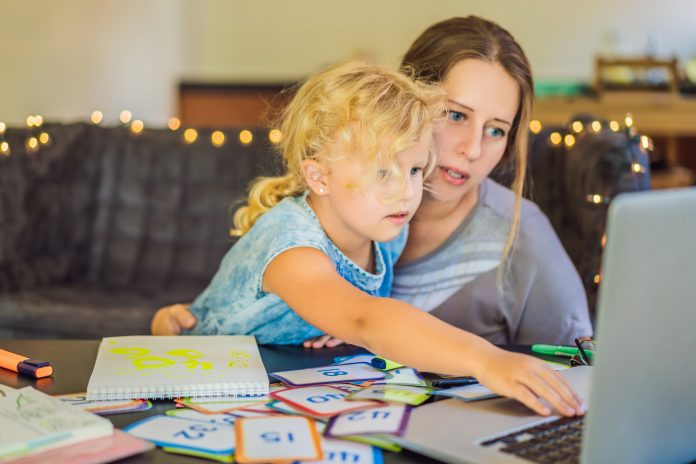By Katy Grimes
California is experiencing a homeschool boom, and it’s not just a result of school lockdowns during the COVID pandemic. The pandemic may have been the first time parents really and thoroughly saw what their kids were being taught in California public schools. And many were shocked.
Lance Izumi, senior director of the Center for Education at the Pacific Research Institute recently finished writing his latest book, “The Homeschool Boom,” which looks at the increase in homeschooling across the United States, and in California.
Izumi says at the start of the pandemic, in spring 2020, just over 5 percent of American households reported homeschooling school-aged children, based on data from the U.S. Census Bureau.
By the fall of 2020 – only 6 months later – that percentage had more than doubled to 11 percent. Izumi notes that the Census Bureau used clarifying information on the survey to ensure that households were reporting true homeschooling and not distance or remote learning through a public or private school.
The percentage of homeschooling households in Florida went from 5 percent to 18 percent, while New York went from 1 percent to 10 percent.
“Here in California, we are seeing this homeschooling phenomenon as well. Between the 2020 and 2021 school years, tens of thousands of students have left the regular public schools,” Izumi said. “The latest total shows that 160,000 students have left the public schools here in California. Where have these students gone? Many are now being homeschooled. In Los Angeles, the number of parents filing private school affidavits, which parents must file with the state in order to homeschool their children independently, more than doubled.”
Izumi says the increase in the numbers of minority parents who have decided to homeschool their children is noteworthy. “Among African Americans nationwide, the percentage homeschooling families skyrocketed from 3 percent to an amazing 16 percent—a five-fold increase from spring 2020 to fall 2020. Among Hispanics, the proportion of families who are homeschooling their children doubled from 6 percent to 12 percent. By fall 2020 that percentage had more than doubled to 11 percent reporting homeschooling children.”
Izumi said he believes that the next big wave in education will be homeschooling. His prediction is bolstered by the Census Bureau, which concluded that families are seeking solutions that will reliably meet their health and safety needs, their childcare needs, and the learning and socio-emotional needs of their children. “Further, the Bureau said that from pandemic pods to standalone virtual schools to homeschooling organizations, parents are increasingly open to options beyond the neighborhood school,” Izumi said. “So the pandemic and the ineffectiveness of the regular public schools to teach students during the pandemic have led to a real revolution in how parents are viewing how best to ensure the learning of their children.”
“Before the pandemic, federal survey data found the most cited reason given by parents for homeschooling their children is concern about the environment of schools,” Izumi explained. “These concerns include safety, drugs, and negative peer pressure. The second most cited reason is dissatisfaction with the academic instruction at schools. The academic research on homeschooling shows that homeschooled students perform better, on average, than non-homeschooled children.”

“In my upcoming book, I interview many California parents who have decided to homeschool their children. Their stories are eye opening and dispel many myths that have grown up around homeschooling. I interviewed Magda Gomez, who is an immigrant from Tijuana, Mexico. Magda decided to homeschool her children after they were bullied and attacked at school. For instance, one student allegedly threatened to poke the eyes of one of her daughters with a pencil. Magda is now an activist in the Hispanic community promoting homeschooling and informing parents about the educational choices they have.”
“I interviewed Carrie Carlson, who is homeschooling her son who has autism and dyslexia,” Izumi says. “Prior to her son’s diagnosis, he had very visible learning problems, such as having a hard time reading. His public school’s response was to put him in the lowest performing group in his classroom, which consisted of mostly non-English speaking students. Before the pandemic, federal survey data found the most cited reason given by parents for homeschooling their children is concern about the environment of schools. Carrie asked, ‘How is this even helping him? It doesn’t make any sense?’ Not surprisingly, her son was very miserable and would pretend to have sicknesses to avoid going to school. Carrie finally decided to homeschool her son and she was able to follow their neurologist’s advice in teaching him. Because her son had trouble decoding, she transitioned him to audio books and he devoured books on tape. Carrie says that he is now one of the most well-read dyslexic kids out there. Also, she was able to adjust his learning to fit his individual pace. A slower pace, taking things in smaller chunks, and taking breaks worked. Carrie believes that if her son was in a regular public school, he would have suffered depression and anxiety.”
“The Homeschool Boom” will be out in early October.
Originally published by the California Globe. Republished with permission.








